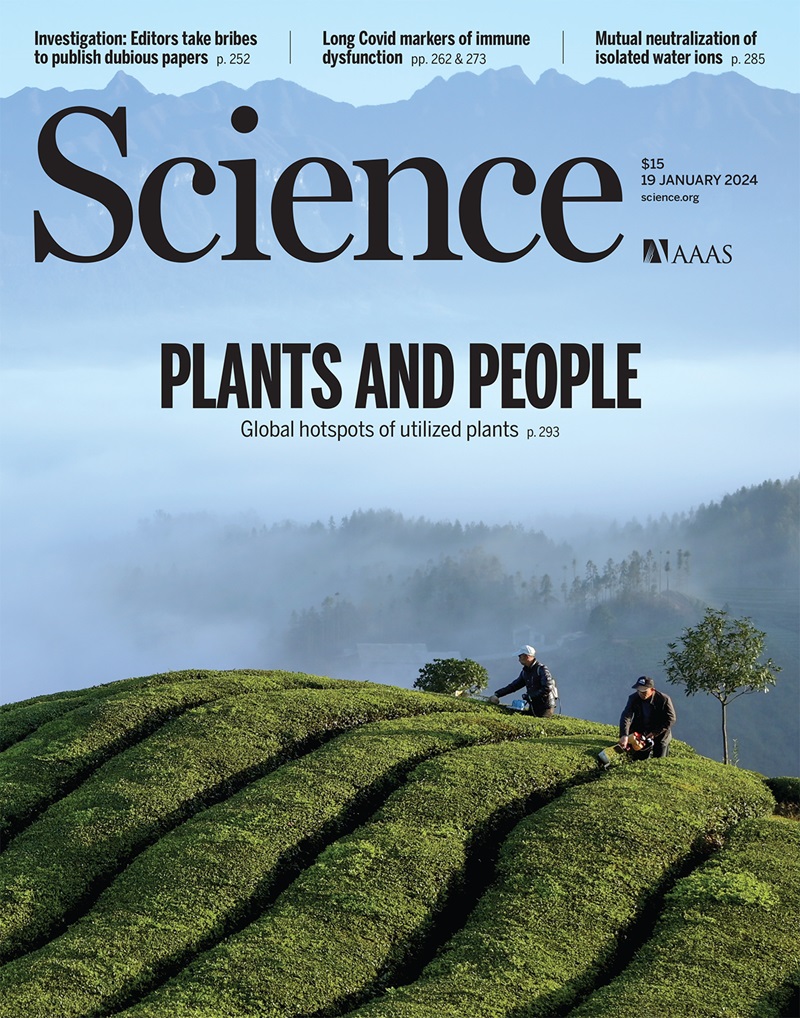沿海海洋保护区无追踪工业捕鱼的全球模式和驱动因素
IF 45.8
1区 综合性期刊
Q1 MULTIDISCIPLINARY SCIENCES
引用次数: 0
摘要
海洋保护区(MPAs)在世界范围内不断扩大,但人们对其边界内的工业捕鱼知之甚少。通过将船舶全球定位系统数据与卫星图像相结合,我们在2022年至2024年期间在全球47%的沿海海洋保护区发现了工业捕鱼,其中三分之二(67%)的船只没有受到公共监测的跟踪。这些未追踪的船只在具有最严格管理类别的海洋保护区中最为普遍(80%),该类别旨在禁止所有开采活动。渔船的存在和密度主要是由海洋保护区的大小和偏远程度决定的,而不是由其管理类别本身决定的。包括未追踪船只在内,海洋保护区内的估计捕捞量增加了28%,达到每年平均每平方公里4小时。这些结果突显了工业渔船在海洋保护区的持续存在,以及我们对全球保护区捕鱼压力的理解存在重要差距。本文章由计算机程序翻译,如有差异,请以英文原文为准。

Global patterns and drivers of untracked industrial fishing in coastal marine protected areas
Marine protected areas (MPAs) are expanding worldwide, but industrial fishing within their boundaries remains poorly understood. By combining vessel Global Positioning System data with satellite imagery, we detected industrial fishing in 47% of coastal MPAs worldwide between 2022 and 2024, with two-thirds of vessel detections (67%) untracked by public monitoring. These untracked vessels were most prevalent (80%) in MPAs with the most restrictive management category, which aims to prohibit all extractive activities. The presence and density of fishing vessels were mainly driven by the size and remoteness of MPAs rather than their management category itself. Including untracked vessels increased estimated fishing effort within MPAs by 28%, to an average of 4 hours per square kilometer per year. These results highlight the continued presence of industrial fishing vessels in MPAs and an important gap in our understanding of fishing pressure on protected areas worldwide.
求助全文
通过发布文献求助,成功后即可免费获取论文全文。
去求助
来源期刊

Science
综合性期刊-综合性期刊
CiteScore
61.10
自引率
0.90%
发文量
0
审稿时长
2.1 months
期刊介绍:
Science is a leading outlet for scientific news, commentary, and cutting-edge research. Through its print and online incarnations, Science reaches an estimated worldwide readership of more than one million. Science’s authorship is global too, and its articles consistently rank among the world's most cited research.
Science serves as a forum for discussion of important issues related to the advancement of science by publishing material on which a consensus has been reached as well as including the presentation of minority or conflicting points of view. Accordingly, all articles published in Science—including editorials, news and comment, and book reviews—are signed and reflect the individual views of the authors and not official points of view adopted by AAAS or the institutions with which the authors are affiliated.
Science seeks to publish those papers that are most influential in their fields or across fields and that will significantly advance scientific understanding. Selected papers should present novel and broadly important data, syntheses, or concepts. They should merit recognition by the wider scientific community and general public provided by publication in Science, beyond that provided by specialty journals. Science welcomes submissions from all fields of science and from any source. The editors are committed to the prompt evaluation and publication of submitted papers while upholding high standards that support reproducibility of published research. Science is published weekly; selected papers are published online ahead of print.
 求助内容:
求助内容: 应助结果提醒方式:
应助结果提醒方式:


